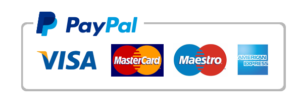DNP-840A Leadership for Advanced Nursing Practice
QUESTION: Discuss two bills or laws that influence nursing practice, one at the federal level and one at the state level. Provide context for how these bills or laws influence nursing practice within your organization or DPI Project.
SOLUTION
A bill is a proposal of legislation that is under consideration by a legislature. The bill becomes a law when it is signed by the President. The process by which bills become law is often rarely predictable and can vary significantly from bill to bill (Congress.gov) In the United States, when it comes to the nursing industry, each state and territory set laws to govern the practice of nursing. These laws are defined in the Nursing Practice Act (NPA), which then interprets it into regulations by each state and territorial nursing board, given the authority to regulate the practice of nursing care and the power to enforce the laws (Huynh & Haddad, 2022). The main purpose behind the federal and state legislation of nursing practice is to protect public health, safety, and welfare, and when it comes to examining the legislation of nursing practice, it starts by recognizing the role of organized nursing associations that represents the needs and rights of nurses, this include the Board of Nursing. The BON is given the authority and power to regulate nursing practice using the language stipulated in the NPA (Marshall, 2016).
Two bills or laws that influence nursing practice are:
Federal level: Obamacare, or the Affordable Care Act: This legislation from 2010 has had wide-ranging effects on the healthcare system, including the work of nurses. The Affordable Care Act was created to expand medical coverage and enhance medical services (Cleveland et al., 2019). In addition, it instituted a number of initiatives to encourage the implementation of technological solutions in healthcare provision and the adoption of electronic health records (EHRs).
State Level: Nurse Practice Act: Every state has its own Nurse Practice Act that states the legal boundaries within which nurses can operate and the duties they must carry out. Licensed practical caregivers, registered nurses, and advanced practice caregivers have different responsibilities. The Nurse Work Act specifies what kind of education and training each of these three types of nurses must have to practice lawfully in the United States.
These regulations have an impact on nursing at healthcare organizations because they outline expectations for nurses’ education, training, and professional conduct. For instance, electronic health records (EHRs) have become more widely used in healthcare delivery due to the ACA (Cleveland et al., 2019). Patients are more probable to receive care that is both safe and effective because of the Nurse Practice Act, which outlines the duties of nurses. These regulations are essential in influencing nursing practice and enhancing patient outcomes.
References
Cleveland, K., Motter, T., & Smith, Y. (2019). Affordable care: Harnessing the power of Nurses. OJIN: The Online Journal of Issues in Nursing, 24(2). https://doi.org/10.3912/ojin.vol24no02man02
Huynh AP, Haddad LM. Nursing Practice Act. [Updated 2022 Jul 18]. In: StatPearls [Internet]. Treasure Island (FL): StatPearls Publishing; 2022 Jan-. Available from: https://www.ncbi.nlm.nih.gov/books/NBK559012/
Marshall, B. (2016). The role of federal and state government in advanced practice nursing. Journal of Pregnancy and Child Health, 3(2) https://doi.org/10.4172/2376-127X.1000239
Instructor’s Response, Comments & Follow-up Question
Dr. Guelsy Diaz
Great post, the regulations mentioned above are critical in all levels to protect patient health improve outcomes. Safety is of upmost priority along with preventative measures, which are also at state and federal levels. For instance, in the case of the Affordable Care Act (ACA), or Obamacare, the three main goals were to improve patient access, elevate the quality of care, and make the healthcare system more accountable to a diverse patient population (Collins & Saylor, 2018). The electronic health record, or EHR, accentuates these goals by spreading patient information through safe technological measure. However, with technology comes many concerns for privacy.
Reference
Collins, Beth L., Saylor, J. (2018). The Affordable Care Act: Where are we now?. Nursing 48(5), 43-47. doi: 10.1097/01.NURSE.0000531892.08687.b7
Instructor’s Question: What bills or laws can you tell us are applied to patient privacy with all the new technology playing a part? (200 Words).
Shabnampreet Kaur
(200 Words).
The political environment influences healthcare, and we as nurse leaders must get involved in advocacy and know how politics affect nursing practice. When the pandemic hit, the federal government passed the Coronavirus Aid, Relief, and Economic Security Act (CARES), including the Title VIII Nursing Workforce Reauthorization Act(S. 1399 / H.R. 728). The bill was signed into law, authorizing the nursing workforce development programs through 2024 (Congress,2019). Nursing education will be strengthened with a regular flow of grants from the federal government for entry-level nursing education. The major grant programs include grants for advanced nursing education, workforce delivery grants, nursing education, practice, national nurse service corps, national faculty loan program, and comprehensive geriatric education grants. Grants are provided to nursing schools. Education centers for nurses pursuing advanced degrees in nursing, including nurse practitioner programs, certified nurse midwives, clinical nurse specialists, nurse educators, nurse anesthetists, and public health nurses.
The workforce diversity grants include grants for professionals from diverse ethnic backgrounds or economically/socially disadvantaged sections. Nurse Education, practice, and retention grants are provided to schools of nursing centers and magnet hospitals—governments at state and local levels, and public and private entities. The national nurse service corps includes a loan repayment program under which 60-85% loan is repaid in return for about two years of service in a facility having a critical shortage of nurses. It also includes a Nursing scholarship program that supports nurses with loan repayments when they work in a similar designated setting with a nurses shortage. The nurse faculty loan program supports nurses pursuing master’s and doctoral degrees. It includes cancellation of up to 85% of their educational loans and interests over four years when after graduation, they teach at a school of nursing. The comprehensive geriatric education grant program includes grants for training the nurse providing direct care to the elderly (American Nurses Association,2019).
Another legislation at the state level is the Full Practice Authority (FPA) in New York state. In April 2022, New York became the 25th state to fully expand the scope of practice for nurse practitioners (Rodriguez,2022). This legislation gave autonomy to N.P.s to evaluate, test, diagnose, manage treatments, and prescribe medicines independently. Earlier, they had to sign a contract agreement with a supervising physician. The proposal also amends the Education law that required N.P.s to complete 3600 practice hours under a physician and also made the Nurse Practitioners Modernization Act expire in June 2022. According to the New York State Nurses’ Union, N.P.s with 3600 hours can practice independently in primary care, and N.P.s under 3600 hours can complete their practice hours either under the supervision of a physician or an N.P. (Brusie, 2022).
Both these laws affect the nursing practice within the learner’s organization. The organization supports nursing professionals from diverse backgrounds, but these professionals cannot upgrade their degrees due to economic hardships. The organization has home health aides, and many of them want to advance their careers in nursing with an associate degree for the starting. But due to the high fee structure, they could not do so. But now, after the passage of this law, the learner can proudly announce that over the last year, eight home health aides have graduated with their associate degree in nursing and started working at the organization as full-time R.N.s, giving an impetus to the nursing workforce.
Similarly, the learner’s organization has five N.P.s working for the last five years. Still, the organization had to contact a physician under whom the NPS worked. But since the previous year, the N.P.s has been granted full authority, and the contract with the physician is no longer required. This year two new N.P.s have joined the organization and are completing their hours under the supervision of the old N.P. So, both these legislation provided direct benefits to the nursing workforce and are helping uplift the profession, and nursing professionals are gaining success by advancing patient care.
American Nurses Association. (2019, December). Nursing workforce development. ANA. https://ana.aristotle.com/SitePages/nursingworkforcedevelopment.aspx
Brusie, C. (2022, April). New York nurse practitioners get full practice authority. Nurse.org. https://nurse.org/articles/new-york-full-practice-nurse-practitioner/
Congress. (2019, November). S.1399 – Title VIII nursing workforce reauthorization act of 2019. congress.gov. https://www.congress.gov/bill/116th-congress/senate-bill/1399?q= {“search”:[“S.+1399 “]}
Rodriguez, S. (2022, April). New York legislation expands nurse practitioner scope of practice. Patient Engagement HIT. https://patientengagementhit.com/news/new-york-legislation-expands-nurse-practitioner-scope-of-practice
Bonnie Flores
(200 Words).
Nurses work in a variety of settings across the country, and there are laws in place that protect the health and safety of the patient. This is essential as nurses are working with people’s lives. Mistakes have the capability of causing harm and even death. A bill that has been introduced at the federal level is S. 1567. It proposes to “amend the Public Health Service Act to establish direct care registered nurse-to-patient staffing ratio requirements in hospitals and for other purposes” (Brown, 2021). While the state of California has mandated safe staffing ratios, this is not the case across the country (Haegdorens et al., 2019). Therefore, this bill, if passed, has the potential to impact nursing care and patient outcomes. A finding that is proposed in the federal bill is that by establishing safe ratios, patient quality care and safety will improve (Brown, 2021). In the California legislature, SB 1334 discusses meal and rest periods for hospital employees (Bradford, 2022). This bill was introduced and passed into law in September 2022. This bill entitles employees who provide direct care for patients in a health setting to a thirty-minute unpaid meal and a second thirty-minute unpaid meal in shifts over ten hours (Bradford, 2022). If employers fail to provide this meal, the employee is entitled to an additional hour of pay (Bradford, 2022).
Both bills are vital to ensuring that patients are well cared for. Nurses work long hours and need time to eat and rest when working a 12-hour day. There have been countless days where I have gone without a bathroom or food break for nearly eight hours, and lunch may be shoving food into my mouth for a few minutes. This is unacceptable. If nurses cannot take care of themselves, how can they advocate for the patient? Additionally, having unsafe patient ratios is not good for the patient, and it is not good for the nurse. When nurses are required to care for many patients, the care declines, throwing in no breaks, leaving a recipe for disaster. My direct practice improvement (DPI) project will take place in the state of California, where there are safe staffing ratios; however, the organization where the project will occur is often short-staffed, and there are no break nurses, which forces nurses to go out of ratio to take a meal break. When nurses are overworked, they have increased rates of burnout, and patient care declines (Park & Nam, 2019). Hopefully, by the time the DPI is implemented, more nurses will be hired, but in a climate where nurse shortages reign, it is highly unlikely.
References
Bradford, S. (Senator). (2022). SB 1334: Meal and rest periods: hospital employees. OpenStates. Retrieved on March 2, 2023, from https://openstates.org/ca/bills/20212022/SB1334/
Brown, S. (Senator). (2021, May 11). S. 1567- Nurse staffing standards for hospital patient safety and quality care act of 2021. Congress.gov. Retrieved on March 2, 2023, from https://www.congress.gov/bill/117th-congress/senate-bill/1567/text
Haegdorens, F., Van Bogaert, P., De Meester, K., & Monsieurs, K. G. (2019). The impact of nurse staffing levels and nurse’s education on patient mortality in medical and surgical wards: an observational multicentre study. BMC health services research, 19(1), 1-9.
Park, H. I. & Nam, K. (2019). From role conflict to job burnout: A medication model moderated by mindfulness. The Career Development Quarterly, 68, 129-143.


